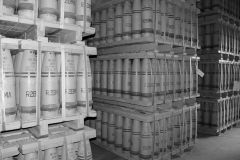
Modern chemical weapons (CW) were first used on a large scale in 1915 and became a prominent feature in the battles of World War I. Chemical weapons were the product of scientific advances, technological developments and industrialisation. The efforts to prohibit their use in war began as early as 1899 but accelerated after the Armistice of 1918. Today, the 1993 Chemical Weapons Convention (CWC) is the strongest ban on CW development, production, stockpiling and use in force. However, since the mid-1990s, new ways of using toxic agents have emerged, including in terrorism, crime and assassination operations. From 2013 on, chemical warfare also returned to the forefront in the Syrian civil war, with CW use attributed to government military forces and the Islamic State in Iraq and the Levant (ISIL). Although all CW declared under the CWC have now been destroyed, the problem of CW has not completely disappeared. New scientific and technological developments challenge the prohibition because they may allow new types of toxic agents, production methods or dissemination methods, in which new categories of actors may acquire an interest. This learning unit introduces you to the history of CW use, the different types of agents, and the efforts to outlaw their manufacture, possession and use under any circumstances. It also discusses the various challenges to the norm against CW and the efforts to strengthen that norm in view of evolving threats and challenges.
After completing this learning unit, the student will:
- understand the nature of chemical weapons (CW) and their effects on humans, animals and the environment
- understand the technical foundations of CW
- be familiar with the Chemical Weapons Convention (CWC) and other relevant international treaties
- understand the current nature of the CW challenge, including
- the evolution of the CW concept
- dual-use issues relating to civilian research, development and production activities
- legitimate and illegitimate uses of irritants (e.g. riot control agents)
- terrorism
- chemical security and safety
- have a detailed background on
-
- CW use in Syria and the international response to a major violation of the norm against CW
-
- CW use in terrorism and assassination operations
-
- the opportunistic use of industrial toxic chemicals (ITCs) and commercially available toxic products
- have an overview of EU policies in support of the CWC and the norm against CW